#lepidoterology
Text
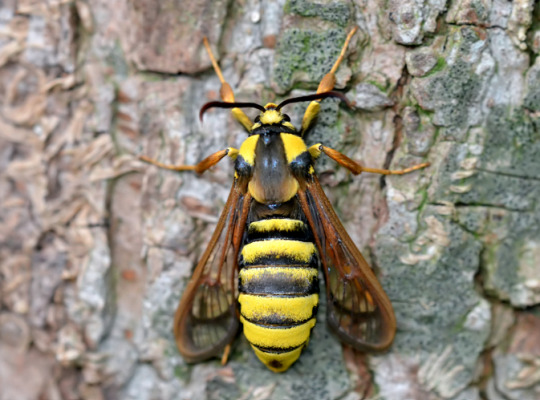
Hornet Moth (Sesia apiformis)
Family: Clearwing Moth Family (Sesiidae)
IUCN Conservation Status: Unassessed
With transparent wings and stripes of yellow-and-black fuzz running down their bodies, Hornet Moths mimic stinging insects such as wasps and hornets in order to deter predatory birds, although they themselves have no stingers and are essentially defenceless if their mimicry fails (this form of mimicry, in which a harmless species mimics a dangerous species to ward off predators, is known as Batesian mimicry.) Native to western Asia and much of Europe but also present in North America as a rare invasive species, adults of this species are active for only a short period between late June and early July; after emerging from their pupas females typically settle on a suitable tree and secrete pheromones to attract mates, and following mating they lay their tiny brown eggs on the roots of poplar (Populus) and willow (Salix) trees. After hatching in the early autumn/fall the pudgy white caterpillars chew through the tough bark of the roots and bore into the tree until they reach the nutritious living tissues in its centre, which sustains them until they're large and mature enough to pupate and emerge from the wood as adults in the following summer.
-------------------------------------------------------
Image Source: Here
#Hornet Moth#hornet moth#moth#moths#insect#insects#entomology#zoology#animal#animals#lepidoterology#lepidoptera#lepidopterans#wildlife#asian wildlife#european wildlife#bug#bugs
62 notes
·
View notes
Text
intro,, grins evil style
💛 i am ATLAS or ATTICUS or WHATEVER…
💛my pronouns are HE/HIM or fun moth neos maybe..
💛 i am 16
this is my art sideblog for anime/non-homestuck stuff i suppose.. (i just really liked this url teehee<33)
main interests include the following: homestuck, lepidoterology, bungou stray dogs, vocaloid (project sekai), the magnus archives, danganronpa, and a bunch of other stuff i’m probably forgetting…
i’m really bad at image descriptions so if anyone would want to do those please let me know 🫶
and if we’re mutuals feel free to reach out if you want to be friends (i love you all you guys are so cool <333)
uncolored/unbolded text below ^^
i am ATLAS or ATTICUS or WHATEVER…
my pronouns are HE/HIM or fun moth neos maybe..
i am 16
main interests include the following: homestuck, lepidopterology, bungou stray dogs, vocaloid (project sekai), the magnus archives, danganronpa and a bunch of other stuff i’m probably forgetting…
1 note
·
View note
Text
Huh ... That's weird
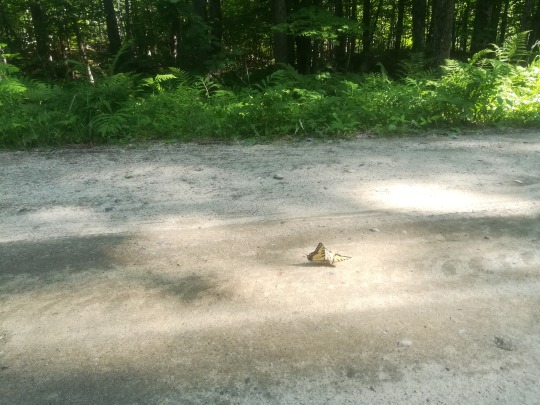
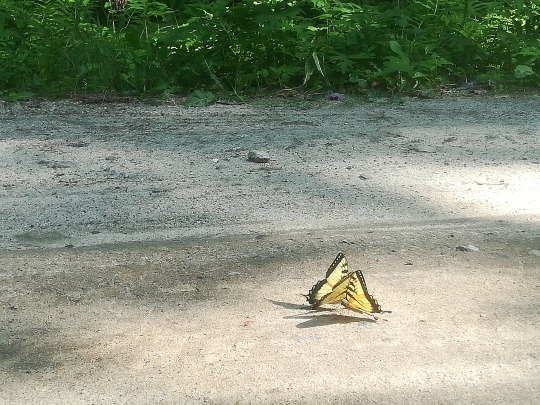
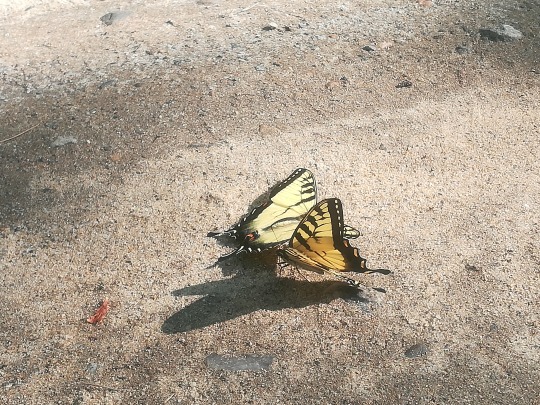
Are they ok??

Oooooooohhh oh they're lovely

What a beautiful model!! 🦋
42 notes
·
View notes
Text
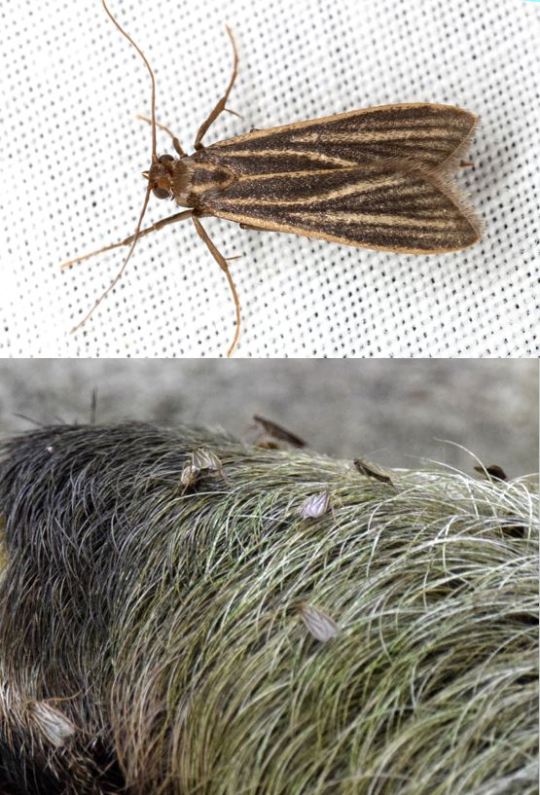
A Species of Sloth Moth (Cryptoses choloepi)
Family: Pyralidae (Snout Moth Family)
IUCN Conservation Status: Unassessed
Cryptoses choloepi is one of several species of "sloth moths", tiny moths in the snout moth family that live in the fur of sloths. Primarily found in Rainforests in Costa Rica, this species specifically inhabits the fur of the Brown-Throated Sloth and is exclusively found alongside its host species. The majority of Brown-Throated Sloths have algae growing in their fur which aids them in camouflaging, and this algae also provides a food source for the moths (although they do not consume enough algae to leave the sloth unable to camouflage.) Once every week a Brown-Throated Sloth descends from the canopy to defecate, and when this happens females of this species that have recently mated will temporarily leave the safety of their host's fur to lay eggs in the fresh sloth droppings - this provides a food source for their caterpillars as they develop (Cryptoses choloepi caterpillars may also use stands of silk to create webs running between multiple dung piles and travel between them to ensure that they are never without food.) After reaching a sufficient size and developing into their adult forms, the newly emerged moths fly into the canopy to look for a sloth of their own to call home. Unlike many cases in which an arthropod lives on the body of mammal, the relationship between Cryptoses choloepi and their host sloths is not parasitic, as while the moths gain both shelter and food from living on the sloth they do not harm their host in any way. It is theorised that the droppings of Cryptoses choloepi provides nitrogen which aids in the growth of the algae in a Brown-Throated Sloth's fur, effectively meaning that each sloth carries a miniature ecosystem in its coat.
Image Source: https://www.inaturalist.org/taxa/868785-Cryptoses-choloepi
#Cryptoses choloepi#sloth moth#moth#lepidoptera#lepidoterology#entemology#zoology#biology#animal#animals#insect#insects#tw insect#tw insects
206 notes
·
View notes
Photo

Black Witch Moth (Ascalapha odorata)
Family: Erebidae (Underwing family)
IUCN Conservation Status: Unassessed
Often mistaken for a bat due to its large wingspan (which may exceed 17cm), the Black Witch Moth is among the largest insects in the Americas, and one of the world’s largest moths. Found from the southern USA to northernmost Argentina (although on a handful of occasions it has been observed as far north as Canada), it prefers dense forest habitats but is highly adaptable and migrates seasonally between the northernmost and southernmost extremes of its range to avoid heavy seasonal rainfall. Adults feed on rotting fruit and breed year-round, laying their eggs primarily on plants in the legume family (Fabaceae), particularly favouring species in the genus Acacia. Throughout much of its range the Black Witch Moth has been traditionally considered a bad omen: in Jamaica it is known as the duppy bat and has been described as a malevolent spirit, and in Mexico it is referred to as mariposa de la muerte (translating roughly to “butterfly of death”) and is said to bring death to any household it enters. That being said, it has also appeared as a positive figure in some cultures - in parts of Hawaii it is said that Black Witch Moths are the spirits of recently departed loved ones that have come to visit their families one last time before passing on.
Image Source: https://www.inaturalist.org/taxa/61503-Ascalapha-odorata
#black witch moth#moth#moths#erebidae#insect#insects#entemology#zoology#biology#lepidoptera#lepidoterology#tw moth#tw moths#tw insect#tw insects#halloween
250 notes
·
View notes
Photo
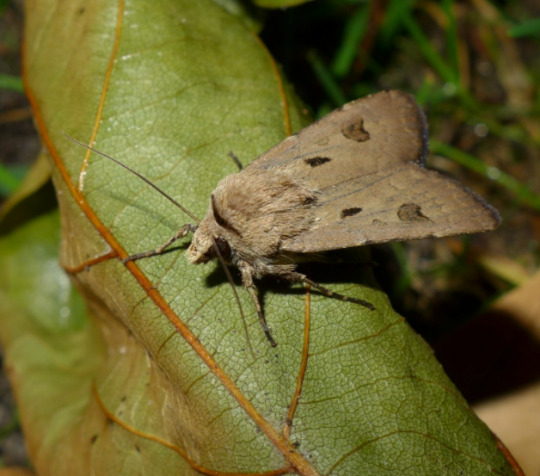
Heart and Dart (Agrotis exclamationis)
Family: Noctuidae (Owlet Moth Family)
IUCN Conservation Status: Unassessed
------------------------------------------------------------------------------
Widespread across almost all of Asia, Europe and northern Africa, the Heart and Dart is named after the markings on its wings - the rounded markings on its lower wing resembles a love heart, while the markings on its upper wings are pointed like a dart. Adults emerge in May and fly at night, searching for mates and the nectar-rich flowers of certain plants such as the common ragwort, red valerian and butterfly bush. Females attract males to their location by secreting pheromones, and after mating will lay their eggs on the leaves of a wide variety of plant species including knotweeds, wild turnips, strawberries, brambles, spinach, oaks and stitchworts. After hatching around 5-10 days later the caterpillars will devour the leaves of their host plant until reaching full size in early October, at which point they will burrow underground to shelter throughout the winter before finally forming a pupa and undergoing their final metamorphosis in the spring. Each generation of adult Heart and Darts live for only a few months (typically having completed their life cycle by the July of the year they emerged in), but as the species can adapt to life in almost any habitat where suitable plants can be found and produces enormous numbers of eggs it is still one of the most abundant moths across its range.
Extra fun fact - Like many moths, Heart and Darts are attracted to lights and are commonly found in large numbers around artificial light sources. This can be helpful when carrying out surveys regarding the diversity of moth species in an area - simply set up a low-power lightbulb with a slippery funnel and a container beneath it. Moths will bump off the lightbulb, slip down the funnel and be trapped in the container where they can be observed, identified and released unharmed the following evening.
------------------------------------------------------------------------------
Image Source: https://www.inaturalist.org/taxa/132887-Agrotis-exclamationis
#heart and dart#moth#owlet moth#moths#lepidoptera#lepidoterology#zoology#biology#entemology#insect#insects#tw moth#tw moths#tw insect#tw insects
39 notes
·
View notes